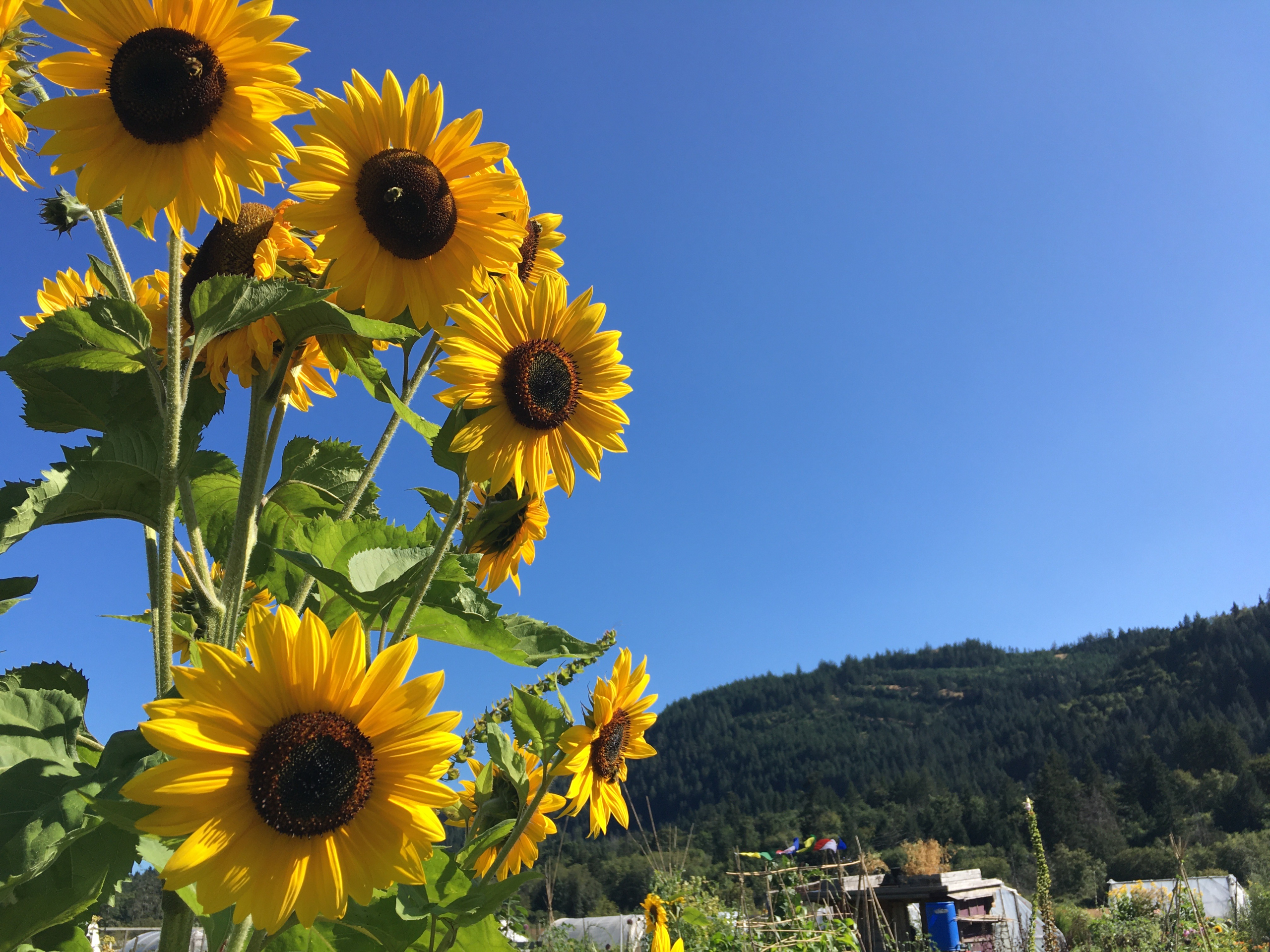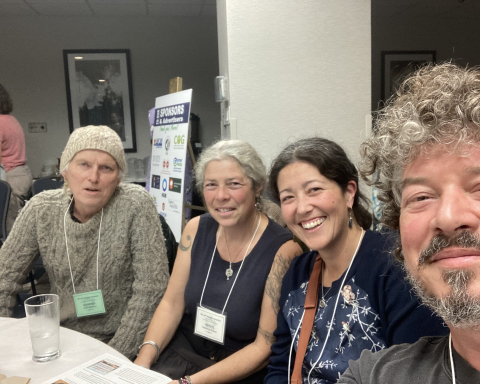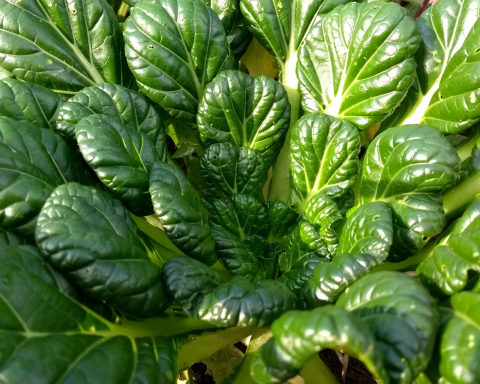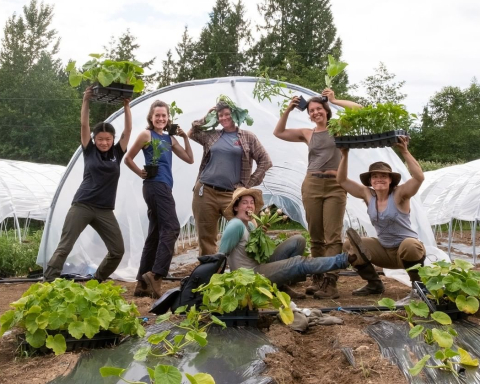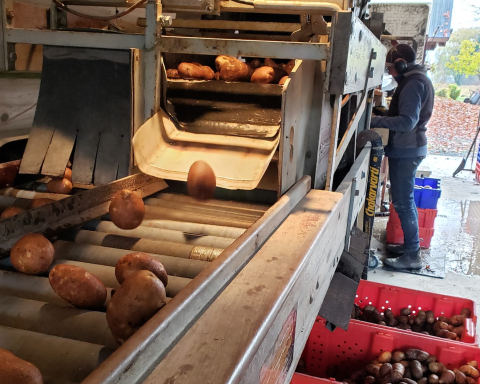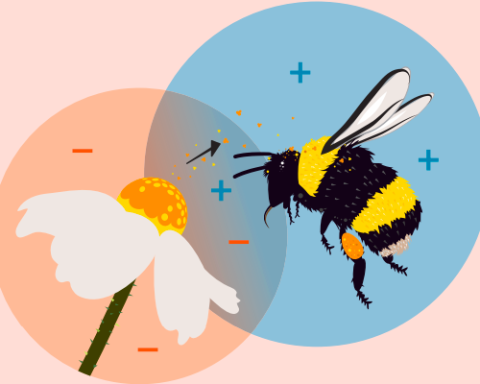Our Best Case for a Climate-Changed Food System
Brian MacIsaac and Rebecca Kneen
Fifty years ago, the combination of climate crisis, income inequality, and environmental toxification led to a massive change in North America. The polar ice melt raised the ocean by several feet, drowning cities all over the coast, including all the coastal agricultural regions of BC. Wildfires burned the uplands of the province, and heavy rains fell on the destabilized landscape, changing waterways and flooding river valleys. Survivors of the death of cities to flood and heat moved inland, putting pressure on the remaining livable areas and forcing a dramatic social restructuring. While other regions fell into enclaves of military rule and oligarchs controlling resources and food production in an almost feudal manner, BC’s social history led it down a different path.
Settlements now are within a narrow zone of uplands, with dense communities surrounded by food and forest land under communal management. Land, Seed, Water, Community and Forest Stewards are trained from youth, and guided by Indigenous leadership and principles of reciprocity and responsibility. There is no private land ownership as we know it: people tend to work in the same area of land and skill for generations, but are free to move into a different region or skill to suit their personal needs. New forms of science have arisen, using the skills of the before-times in the context of over-riding ecosystem health, as people have learned that human health is utterly dependent on ecosystem health.
While ocean desalination has killed a lot of ocean life, plants and creatures evolved for living in brackish water are thriving, and there is evidence that some species are rebuilding populations and ecosystems. The oceans remain out of bounds for most, however, in an attempt to let them regenerate. Lakes and rivers have become the primary source of fish, with strict protections over watersheds and waterways in place to support this vital food supply. There are no petro-powered motors allowed on any waterway, and fishing is strictly regulated to prioritize the needs of the water-life systems rather than human consumption.
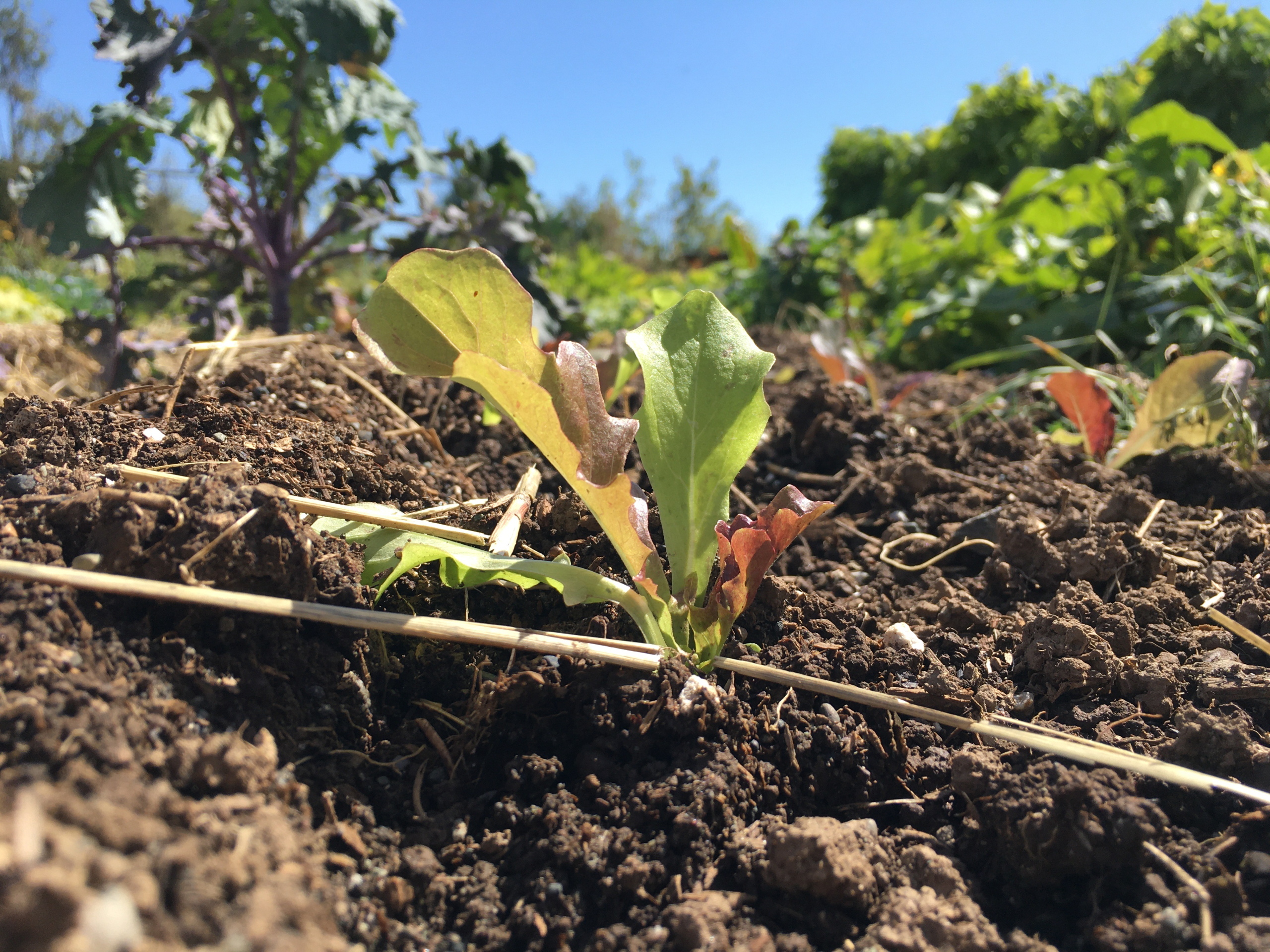
Centralized mass power production failed completely during the “Spasm,” as wildfire, flood, and mudslides tore the distribution system apart and showed its essential weakness. Electricity is created by steam, solar, wind, and tidal power, in local systems with local distribution. Petrochemicals are almost non-existent, saved for lubrication, gaskets, and bushings, and parts for solar panels. Solar panels themselves are rare, made mostly from reclaimed materials mined from dumpsites all over the province. Steam, wind, and run of the river hydro are the most common forms of power after human and horse power.
Forest replant programs, already beginning to change when the Spasm happened, now focus on planting a wide diversity of species. Watersheds and stream banks are always replanted first, but all replants go in cycles of succession to first stabilize the land and build soil, then adding species that would naturally follow to build canopy and long-term stable systems. Mycorrhizae are planted along with the trees to encourage living soil. Stable slopes, protected watersheds, and vibrant ecosystems are the primary goal, and many species are nurtured which have no direct human use. Forests are harvested for food and timber, but with selective logging only for wood which will be turned into finished products within the local region. Food harvesting is done under the supervision of Indigenous ecosystems managers.
Polyculture farming in small fields has replaced large scale agriculture, as the giant monocrop farms all drowned along with the large flatland areas of the province. All farming is based on organic principles and techniques developed and proven over the last century to have the most regenerative value. Organic farms using mixed or polyculture systems along with cover crops and extensive mulch systems were the only farms to have survived the Spasm relatively intact, as their lively soils were covered to protect from erosion and their many species provided weather, pest, and disease resilience. The knowledge inherited from these regenerative farms provides the basis for new farming techniques.
Farms are organized and managed for each local community in a mix of food, fodder, fibre, and trade crops. The village model keeps housing on rocky land, saving deeper soil for growing crops, and everyone participates in farming—some year-round, some seasonally while their main tasks take them into other areas of expertise—unemployment is not a problem, as every hand is needed to ensure survival. Co-operative farming also means that farm machinery is used efficiently, with new technology constantly being invented by workers to suit the needs of small, diversified farms. Crop patterns and cycles meet community needs, with centralized storage and processing, all of which allow for plenty of labour, skills development, and efficiencies of scale and technology. Food storage makes use of passive systems, from canning and drying to underground cold storage which needs no electricity whatsoever.

Polyculture farms make use of terracing for field crops in hilly areas and slopes, as well as involving goats, sheep, and cattle in small flocks and herds. Communities keep only a few cows or goats for meat and milk, depending on their ability to grow the needed winter fodder. Heritage breeds have been selected for their hardiness and heat tolerance, and ability to thrive on pasture and forage only. Sheep are kept in other highland areas, valued for their milk, meat, and wool, as well as their use in grazing cover crops while leaving trees intact. Livestock are highly valued for their concentrated protein, fibre, and manure, so necessary in small-lot agriculture. Pigs and chickens are raised by most households, living on scraps and integrated into crop rotation systems, turning food waste and harvest detritus into precious food and fertilizer, while breaking pest and disease cycles. Meat is a much smaller part of the daily diet, with legumes, eggs, and vegetables taking over, but dairy and meat are cherished for their ability to provide sustenance when the now-common wild shifts in weather devastate field crops.
The expense and waste of shipping fresh foods out of season has shifted everyone’s diets to focus on local, seasonal foods, with a great reliance on preserved foods for cold seasons, and a lot of investment in low-tech season extension techniques. Coffee and chocolate have become the longest-distance trade goods, and are saved for special occasions, while other foods once considered staples of specialized “earth-friendly” diets are unheard of: coconuts are traded whole only, and very rare, cashews are never seen, and almonds’ high water consumption killed most of them during the repeating droughts.
As economies have become more locally focused, so have diets. Trade begins with neighbouring areas, focusing on goods and foods which cannot be produced locally—wild rice, grains, bison meat and robes, and materials mined from scrap in other regions are all high value, as well as high-tech items and finished goods like cloth. Southern BC’s wool is traded for linen from the Peace and prairies.
Fibre for clothing comes primarily from wool, with hemp and linen being grown only in limited areas due to their extensive space and nutrient requirements, but they are always included in long cycle crop rotations. Local craftspeople and mills provide the needed processing, while excess cloth, thread, and yarn are valued trade goods.
Pole beans adorn the southern and eastern walls of any house not covered in espaliered fruit trees, as legumes become the workhorse of everyone’s diet, and provide both shade and food. Long cycle crop rotations include grains, legumes, fodder, fibre, and vegetable crops, with zero use of toxic pesticides and herbicides. The mass die-off of pollinators and 80% of insect life due to the use of agrotoxins also killed off many tree and plant species, but new insects are starting to fill in the ecosystem gaps, and Land Stewards are learning to adapt to reduced and changed insect life.
Beekeeping is a critical new profession, as the death of insects and use of agrotoxins devastated both honeybees and native bees. Beekeepers breed both honeybees and solitary bees, and are venerated for their social teachings as well as the vital pollination and, of course, honey. Groups of children help with pollination, being encouraged to run through flowering crops to spread pollen while they play.
Seed Stewards are constantly adapting varieties, but everyone grows several crops for seed, as so many varieties are needed to create the genetic variations for constant adaptation. GMO traits and terminator genes keep surfacing, requiring constant attention and rogueing out of affected varieties, while always trading seed and breeding from those varieties that show the most local resilience and adaptation. Seeds provide another valuable source of trade goods, sharing crop resources, genetic variation, and skills.
Shorter and more violent winters have changed diets as well. Hydroponics and indoor “farms,” once touted as the saviour technologies, were far too dependent on electric power and petrochemicals for everything from irrigation to fertilizers to lighting and other infrastructure. Instead, every family grows sprouts to provide the bulk of winter greens, as well as hardy crops like kale, chard, spinach, and corn salad raised over winter in cold frames. Cold storage keeps a multitude of root vegetables, fruit, and cabbage fresh all winter, while meat provides any missing vitamins, and canned, fermented, and dried food create lots of variety. High-tech, energy intensive systems have failed over and over again, while passive systems of cold storage have proven value.
In many ways, this is a change back to a much earlier lifestyle, without many of the modern conveniences we take for granted. In other ways, we have managed to bring with us the best of contemporary technology and scientific advancement. Medicine has changed, as the vast array of pharmaceuticals is not accessible, but specialized production is supported by groups of communities, with pharmaceuticals being a highly valued trade commodity. Many other modern technologies (washing machines, for example) have been adapted to human power, and are being built for long-term use rather than planned obsolescence. Dumpsite mining, while dangerous due to the high levels of toxins, provides an unbelievable resource for otherwise scarce chemicals and materials.
What has really changed is our attitude: life is no longer disposable, and we live in the constant awareness of the value of the ecosystems in which we live.
Brian MacIsaac creates art and beer and instigates revolution at Crannog Ales, on unceded Secwepemc Territory. He spent years as a social worker and on the front lines of anti-fascist and anti-poverty work, actively working against British colonialism and for the re-unification of Ireland.
Rebecca’s parents led her down the sheep track to food sovereignty and food systems analysis through their Ram’s Horn magazine and Brewster’s many books. She farms and brews in Secwepemc Territory at Left Fields/Crannóg Ales and is Organic BC’s representative to the Organic Federation of Canada.
Feature image: Sunflowers at Burgoyne Valley Community Garden. Credit: Moss Dance.


